How to Write a Formal French Letter Template
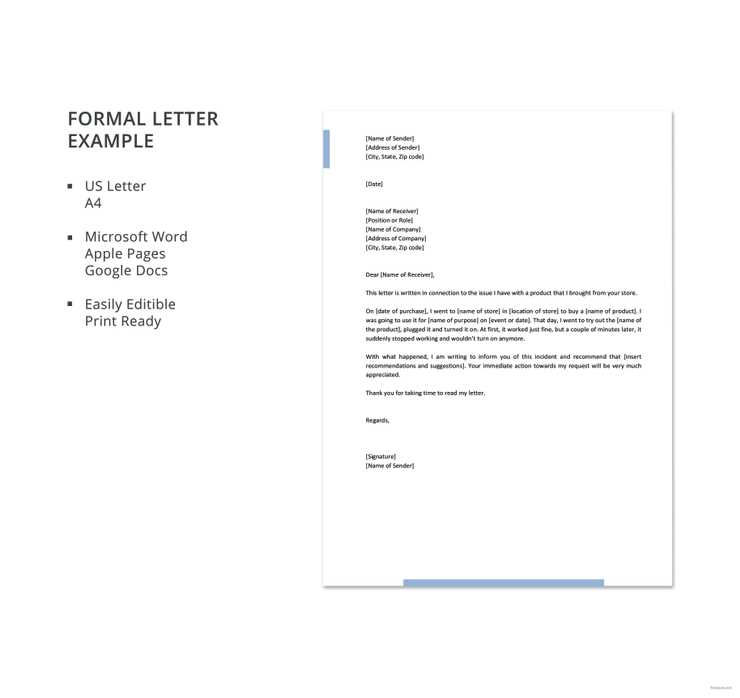
When composing written communication in French, it is essential to follow certain conventions that reflect respect and professionalism. The structure, tone, and language used in these documents play a crucial role in conveying your message effectively, whether for business or formal personal matters.
Understanding the key components is important for creating a polished and respectful communication. From addressing the recipient appropriately to selecting the correct closing phrases, every detail helps to ensure your message is both clear and courteous. These elements contribute to the overall impression your correspondence leaves.
By mastering these essentials, you can confidently engage in professional exchanges and avoid common pitfalls. Whether you are drafting a letter or an email, applying the right structure and expressions will elevate the quality of your communication.
Understanding the Basics of French Letter Writing
Writing in a professional context requires attention to detail and adherence to specific rules that ensure your communication is both respectful and clear. It involves structuring your message correctly, using appropriate vocabulary, and following accepted conventions. These elements work together to create a polished piece of correspondence that is well-received by the recipient.
Clarity is the foundation of any good communication. Whether you are addressing a colleague, client, or official entity, organizing your thoughts logically is essential. Starting with a proper greeting, followed by the body of the message, and ending with a suitable closing can make a big difference in how your message is perceived.
Furthermore, choosing the right tone is equally important. While being respectful, you should avoid overly casual language in professional exchanges. Instead, use language that conveys seriousness and maintains a level of formality appropriate to the situation.
Key Elements of a Formal French Letter
When crafting professional written communication, it’s essential to include several core components that ensure clarity and respect. These elements not only make your message comprehensible but also reflect your professionalism. By adhering to these guidelines, you will be able to create a well-structured and effective message.
Introduction and Greeting
The opening sets the tone for your message. A polite and appropriate greeting establishes the right level of formality and shows respect for the recipient. Consider the following points:
- Addressing the Recipient: Always use the proper title and last name, such as “Monsieur” or “Madame”.
- Opening Salutations: Begin with phrases like “Je vous écris” or “Je tiens à vous informer”.
Body of the Message
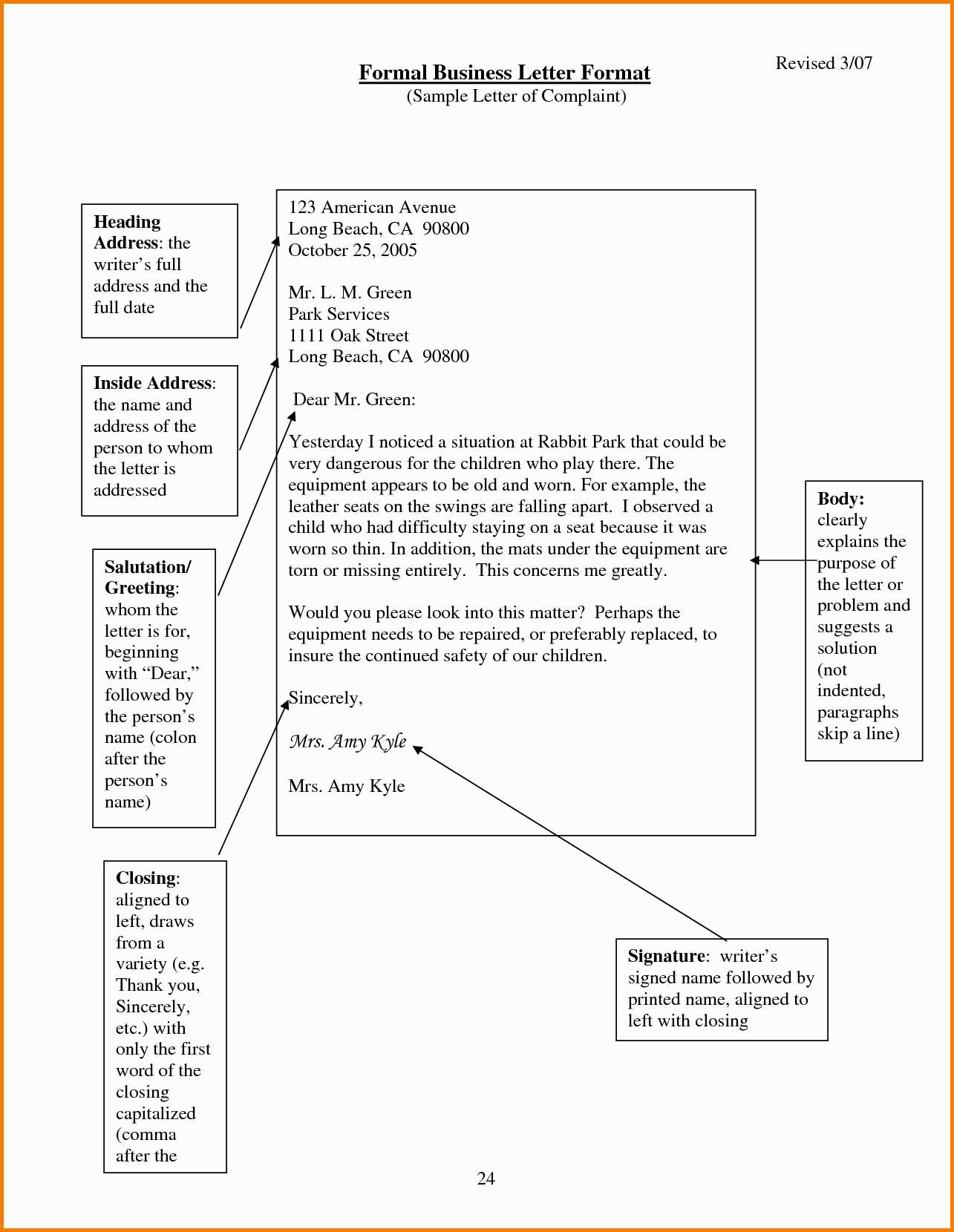
The main content of your communication should be clear, concise, and well-organized. It’s important to:
- Be Direct: Clearly state the purpose of your message right at the beginning.
- Use Formal Vocabulary: Avoid casual expressions and use more formal phrasing to maintain a professional tone.
- Keep It Organized: Break the text into short paragraphs, focusing on one point per paragraph.
Conclusion and Closing
Finish your communication with a courteous closing that reflects the respect you have for the recipient:
- Conclude Politely: Phrases like “Je vous prie d’agréer” or “Veuillez agréer, Madame, l’expression de mes salutations distinguées” are commonly used.
- Sign Off: End with your name and any relevant title or position.
Common Phrases for Formal Correspondence
In professional communication, using the right phrases can help convey respect, clarity, and a proper tone. The selection of words is crucial to ensure your message is received as intended, without being too direct or overly casual. Below are some commonly used expressions that can enhance the quality of your communication.
Greetings and Introductions
The opening lines of your message should be polite and respectful. Here are some useful phrases:
- Je vous écris pour: “I am writing to…”
- Je tiens à vous informer: “I would like to inform you…”
- Permettez-moi de vous rappeler: “Allow me to remind you…”
- En réponse à votre demande: “In response to your request…”
Requests and Suggestions
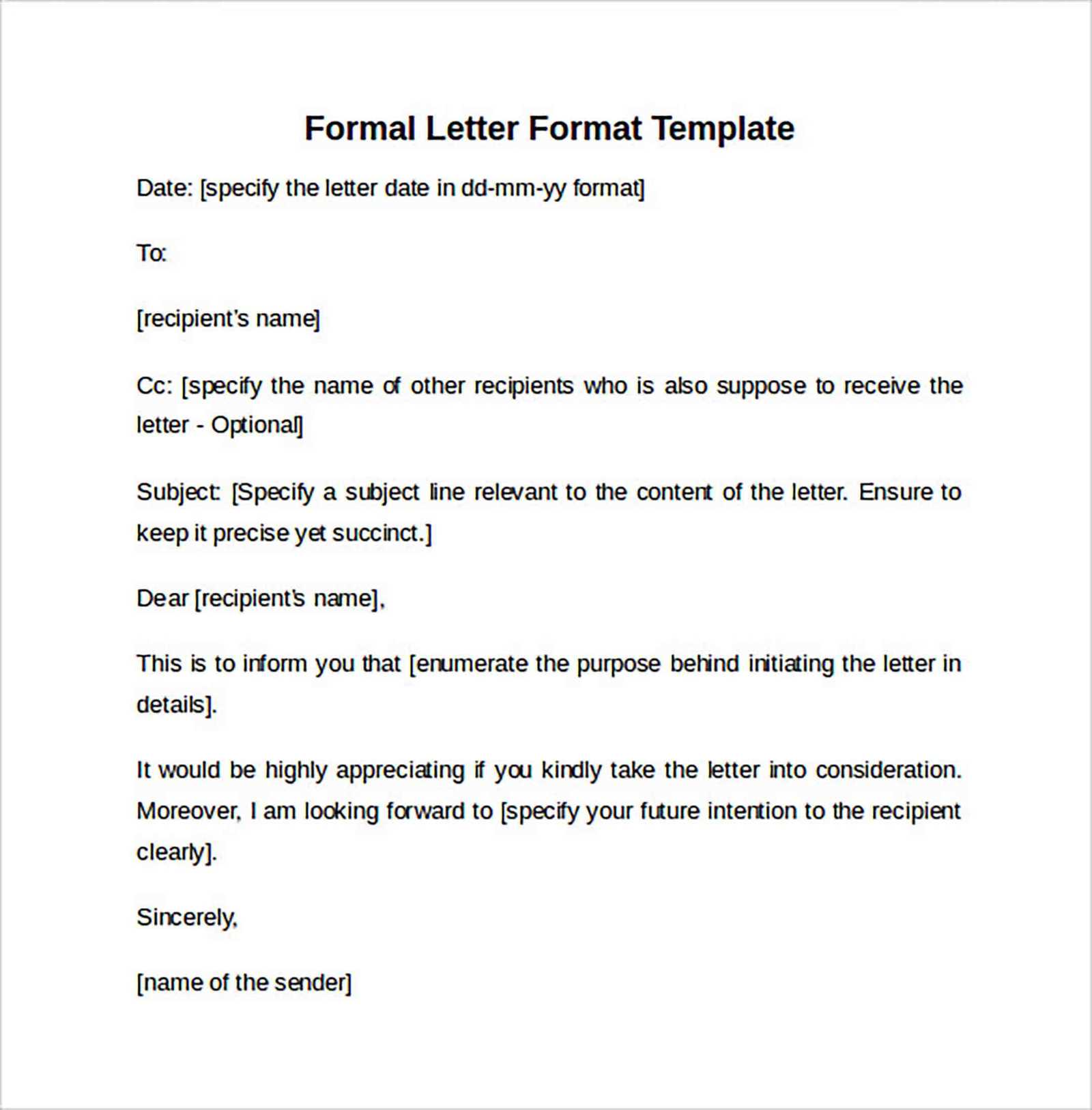
When making requests or suggestions, it’s important to maintain politeness while being direct:
- Je vous prie de bien vouloir: “I kindly ask you to…”
- Pourriez-vous s’il vous plaît: “Could you please…”
- Je vous serais reconnaissant(e) de: “I would be grateful if…”
- Je vous suggère de: “I suggest that you…”
Closing Remarks
The final lines of your message should express gratitude and a polite sign-off:
- Dans l’attente de votre réponse: “I look forward to your response.”
- Je vous prie d’agréer: “Please accept…”
- Veuillez recevoir mes salutations distinguées: “Please accept my distinguished regards.”
- Je vous remercie de votre attention: “Thank you for your attention.”
How to Address a Recipient Properly
Properly addressing the recipient is crucial in any professional correspondence, as it sets the tone for the entire message. The way you address someone reflects your level of respect and formality, which can influence how your message is received. Understanding the correct titles, honorifics, and phrases to use for different individuals is essential to making a good impression.
Using Correct Titles
Titles play an important role in establishing the level of respect and formality in your communication. Depending on the recipient’s position or status, you should adjust your salutation accordingly:
- Monsieur/Madame: These are standard titles for addressing a man or woman, respectively, and should be used unless the recipient’s title is known.
- Docteur: For someone with a doctoral degree or medical profession.
- Professeur: For addressing a teacher or professor.
- Maître: Used for lawyers and legal professionals.
Choosing the Right Salutation
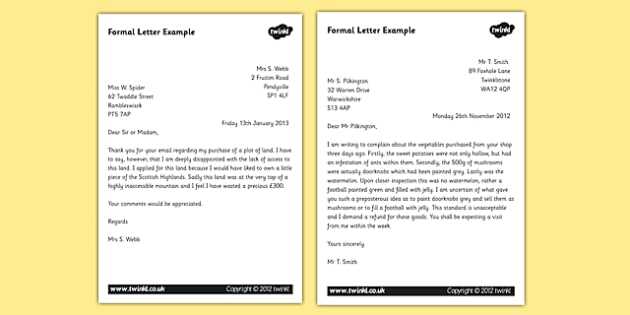
Once you know the appropriate title, it’s important to choose the correct salutation based on the level of formality. Here are some common options:
- Bonjour: Suitable for less formal communication, but still respectful.
- Madame, Monsieur: A polite, neutral greeting for addressing both genders.
- Messieurs: When addressing a group of men or a mixed-gender group.
- Chère Madame / Cher Monsieur: When you are addressing someone with whom you have a more familiar relationship, but still wish to maintain a professional tone.
Choosing the Right Closing Salutation
The closing salutation is an important part of any professional communication, as it leaves a lasting impression. It’s crucial to select the appropriate phrase to match the tone of the message and the relationship with the recipient. A well-chosen closing conveys both respect and professionalism, ensuring your message ends on the right note.
Common Closing Phrases
Depending on the level of formality and the context of your communication, there are various phrases you can use to conclude your message:
- Veuillez agréer, l’expression de mes salutations distinguées: A highly formal and respectful closing, often used in official or business correspondence.
- Je vous prie d’agréer, l’expression de mes salutations respectueuses: Another formal option, slightly less stiff than the previous one, used when addressing someone with whom you maintain a professional relationship.
- Avec mes salutations les plus sincères: A polite yet warm closing, appropriate for formal personal communications.
- Je vous adresse mes salutations distinguées: A respectful and neutral option, suitable for most professional exchanges.
Adjusting the Tone for the Recipient
The closing should reflect the relationship and level of familiarity with the recipient. For example:
- For Colleagues or Familiar Contacts: Less formal closings like “Cordialement” or “Bien à vous” may be more suitable.
- For Higher-Ranking or More Formal Situations: Stick to traditional, formal expressions that convey respect and professionalism.
Formatting Tips for Professional Letters
Proper formatting is essential for ensuring that your written communication appears clear, organized, and professional. The structure of your document not only helps to deliver your message effectively but also demonstrates your attention to detail. A well-formatted message can make a significant difference in how the recipient perceives your professionalism and intent.
Basic Layout Guidelines
When writing a professional message, there are certain layout standards you should follow to ensure clarity and readability:
- Margins: Use standard 1-inch margins on all sides of the page to create a clean, balanced look.
- Font: Choose a clear, legible font such as Arial or Times New Roman, typically in size 12 for the body text.
- Line Spacing: Set the line spacing to 1.5 or double for ease of reading and to provide space for comments if needed.
- Paragraphs: Leave a space between paragraphs to enhance readability. Avoid block paragraphs; instead, separate sections with clear breaks.
Organizing the Content
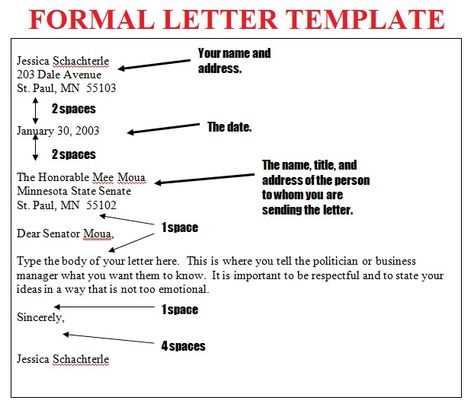
How you organize the content within your communication is equally important as the physical layout:
- Clear Sections: Break the content into logical sections with appropriate headings, making it easier for the recipient to follow your points.
- Alignment: Align the text to the left and avoid centering or justifying the content, as left-aligned text is the easiest to read.
- Signatures: Leave space at the end for your signature. Include your name and any relevant title beneath your closing remarks.
Examples of Formal French Letter Templates
To better understand how to structure your professional communication, it’s useful to examine examples of commonly used formats. These examples will help illustrate the best practices for conveying your message in a clear and respectful manner. Below, we’ve provided a few sample formats for various purposes.
Business Communication Example
Here’s a simple example for a business-related message:
| Section | Example |
|---|---|
| Salutation | Madame, Monsieur, |
| Introduction | Je vous écris pour vous informer de… |
| Body | Concernant votre demande, je vous prie de noter que… |
| Conclusion | Je vous prie de bien vouloir agréer l’expression de mes salutations distinguées. |
| Signature | [Your Name] [Your Title] |
Request for Information Example
Here’s an example format for requesting information from a company or organization:
| Section | Example |
|---|---|
| Salutation | Madame, Monsieur, |
| Introduction | Je me permets de vous contacter pour obtenir des informations sur… |
| Body | Je serais reconnaissant(e) si vous pouviez me fournir les détails suivants… |
| Conclusion | Je vous remercie par avance et reste dans l’attente de votre réponse. |
| Signature | [Your Name] [Your Position] |